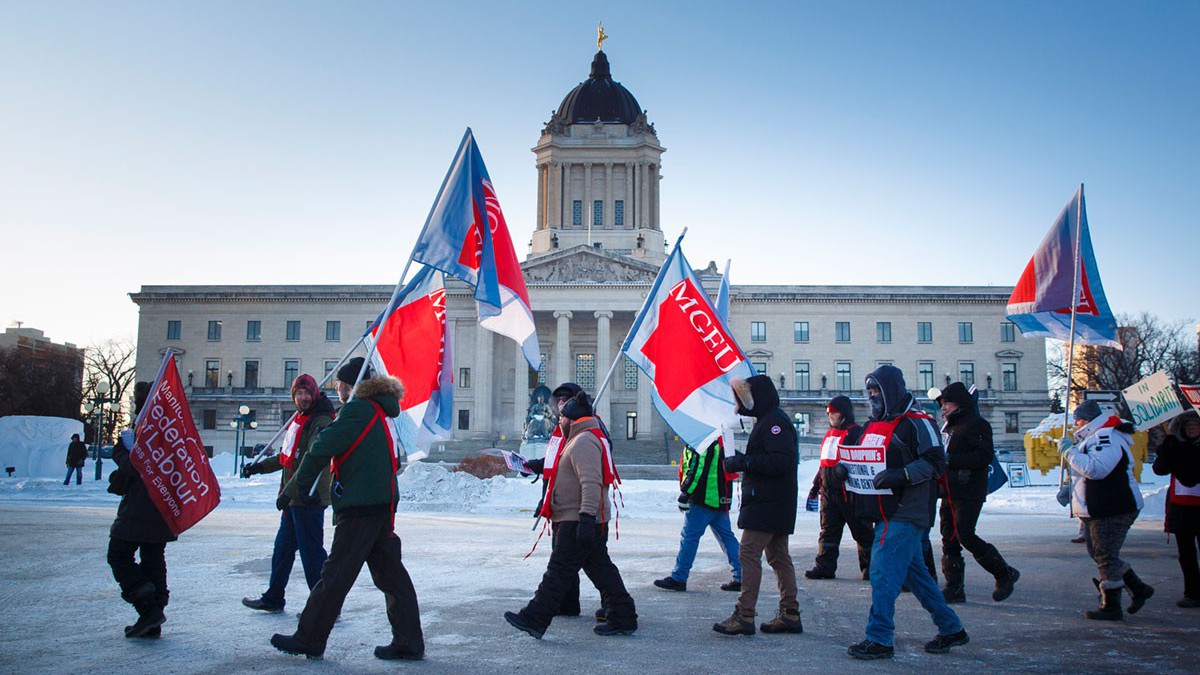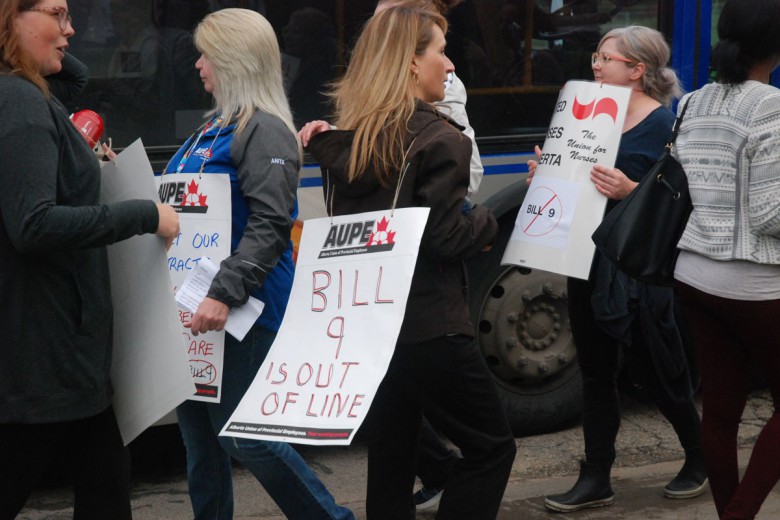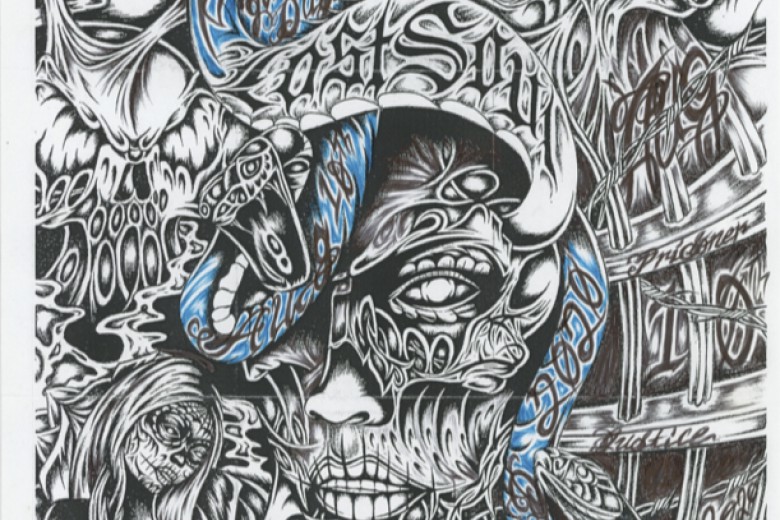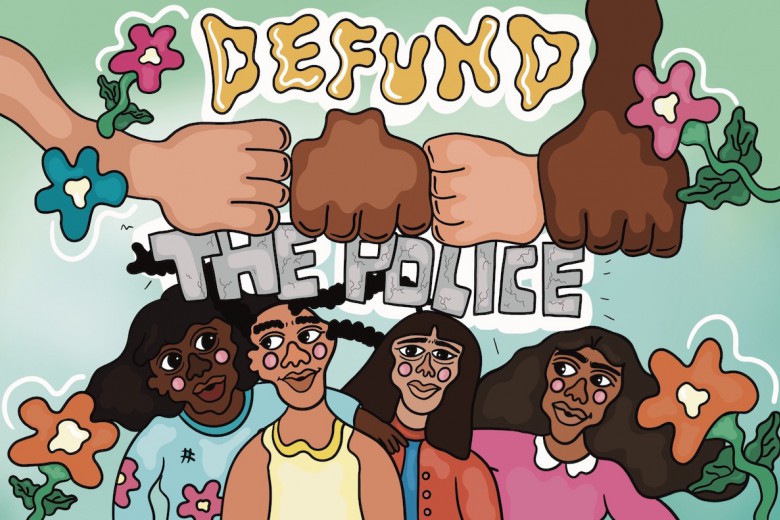Errol Greene was 26 years old when he died in a Winnipeg hospital.
An Indigenous man and father of four, Greene had been repeatedly denied anti-seizure medication by correctional officers while incarcerated at the Winnipeg Remand Centre, instead shackled on the ground in his cell after subsequent seizures. He died of internal bleeding on May 1, 2016.
In response to rising anger from the community to the deaths of Greene and four other inmates in the remand centre in 2016, Michelle Gawronsky – president of the Manitoba Government and General Employees’ Union (MGEU), which represents 32,000 provincial public-sector workers, including correctional officers – wrote an op-ed in the Winnipeg Free Press, arguing “it is important that we all suspend judgment about what happened in each case until all the facts are known.”
As if that wasn’t callous enough, Gawronsky then used the platform to call for the construction of a new jail in Dauphin and increased funding for jails.
“The handling of Errol Greene was disgusting and incredibly disappointing,” says an MGEU shop steward in an interview with Briarpatch, who agreed to speak on the condition of anonymity. “It was the most disappointed I’d ever been in my union up to that point.”
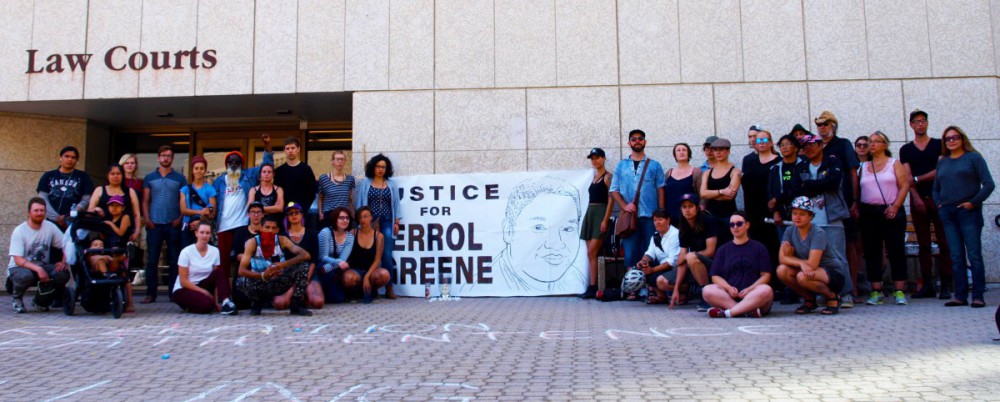
The union’s tough-on-crime activism has only become louder and more expansive since then. Throughout 2018, the union used the cover of the “meth crisis” to call for elevated powers for security guards in hospitals. An alleged spike in liquor store thefts in the winter of 2019 led the union to promote policing, barriers to entry, and ID checks, ostensibly to protect workers.
When the Conservative provincial government announced the closure of the Dauphin jail in early 2020, which employs about 80 people in the small city about three-and-a-half hours northwest of Winnipeg, the union doubled down on incarceration, mobilizing fears of job loss and rural divestment to gather thousands of petition signatures and stage rallies in both Winnipeg and Dauphin opposing the proposed closure.
"What does that say about us if we’re fighting to keep these horrible institutions open?”
“For my union to be fighting for a prison to stay open is just entirely wrong,” says the shop steward. “It shows a lack of solidarity with Indigenous people as well. We look at the facts: 70 per cent of the prison population is Indigenous. What does that say about us if we’re fighting to keep these horrible institutions open?”
The carceral left
The union has become the leading advocate of jail-building in the province even though correctional officers have only ever made up 5 per cent or so of its membership. While the trend toward punishment and securitization is not unique to Manitoba, the MGEU is a key piece in solving the puzzle of how new jails and police have become a project of the social democratic left.
Elsewhere, the expansion of punishment at the expense of our social safety net has been taken as evidence of union weakness. But in Manitoba, the history of the MGEU is one of gaining strength and momentum through its defence of correctional officers and jails.
This is a “history of the present” in which the choices about whom to act in solidarity with are being posed to members of the public in identical form as in the past.
The history of the MGEU provides clues about what happens when lines are drawn (and walls are built) between those who are imagined as deserving of solidarity and those who aren’t. This is a “history of the present” in which the choices about whom to act in solidarity with are being posed to members of the public in identical form as in the past. Recounting this history is not only about scolding past union leaders for choices they made, but also recognizing that we are being faced with the same choices today – and the decisions we make will shape the future.
Riots and “rehabilitation”
In 1999, Gary Doer, a former correctional officer and superintendent at Winnipeg’s youth jail, was elected premier of Manitoba as leader of the New Democratic Party.
Doer would lay the groundwork for the NDP to undertake the most significant expansion of carceral capacity in Manitoba’s history. Over the course of three consecutive terms, the provincial NDP government (led first by Doer, then by Greg Selinger) would add 651 jail beds (which represented a 52 per cent increase in jail capacity), more than double provincial funding for police by 2011, pursue zero-tolerance policing and charging policies, and ultimately produce a 113 per cent increase in imprisonment between 2000 and 2014.
Between 1999 and 2016, when the NDP lost power, Manitoba’s justice budget doubled from $300 million to $600 million, adjusted for inflation. Corrections – youth and adult jails – rose from 36 per cent of the province’s justice budget in 2000 to 72 per cent in 2013. Since 2003, there has been a 460 per cent increase in women in sentenced custody.
Doer would lay the groundwork for the NDP to undertake the most significant expansion of carceral capacity in Manitoba’s history.
The NDP’s rise to power under Doer’s leadership is inextricable from the swell of correctional officer power within the MGEU in the decades before his election. And this itself is intertwined with progressive attempts to reform prisons in a rehabilitative image. Those attempts, and the role of corrections workers, have been a central part of the MGEU since its beginning.
The precursor to the MGEU, the Manitoba Civil Service Association (MCSA), was founded a few months after the 1919 Winnipeg General Strike was crushed; the governor of the provincial jail was a prominent signatory member. This was also a period of increased jailing in Manitoba, particularly of those hardest hit by the Great Depression.
In the early 1930s, expanded police powers and restrictions on immigration – infused with anti-Semitism and anti-communist sentiment – were directed at “non-British” youth and unemployed migrants overwhelmingly from eastern European countries. This was made clear through the spike in jailing of poor people for low-level offences during that time. A 1938 riot at Manitoba’s Headingley Gaol started in response to rotten meat being served, and it was put down by guards using tear gas.
However, “overcrowding,” not lack of quality food, was frequently identified by politicians and guards as the leading problem in jails.
After a wave of prison riots across the country, the federally commissioned Archambault Report recommended far-reaching reforms to improve prison conditions and reorient prisons away from punishment and toward rehabilitation. However, “overcrowding,” not lack of quality food, was frequently identified by politicians and guards as the leading problem in jails, along with lack of programming for inmates and training for guards.
The concept of the prison as an institution of rehabilitation also relied on reimagining guard labour as specialized and professional. However, prisoners continued to expose the foundational inhumanity of such jobs. In 1946, the imprisoned women at the Portage jail staged a coordinated protest against abuse by guards, an outbreak of venereal disease, and inhumane food and living conditions: together, at the same time, they threw furniture out the windows of their cells.
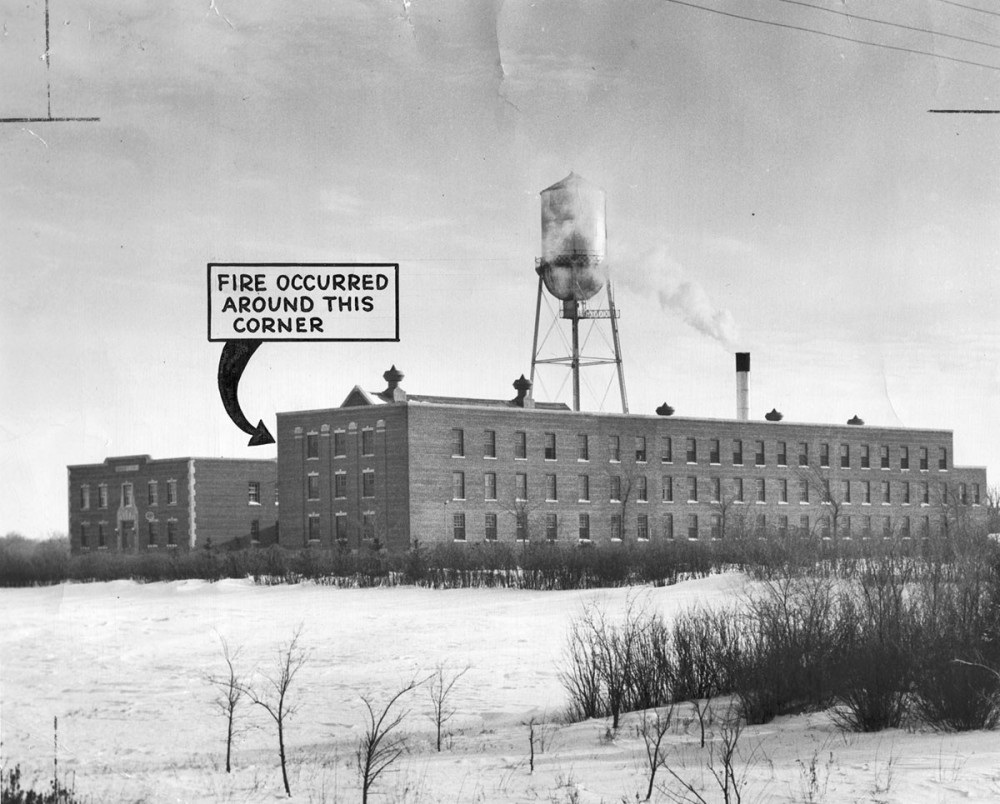
Throughout the 1950s, the governor of the Headingley jail complained that guards were frequently leaving to join the Winnipeg police due to higher wages and the jail being well over capacity, incarcerating 389 people in a space designed for only 275 in 1954. That year, a jail-wide riot at Headingley was triggered when a prisoner was denied phenobarbital (an anti-seizure medication) by a guard, resulting in a knife being pulled and the prisoner ending up in solitary confinement. Several more riots broke out at Headingley over lack of quality food.
The spectre of “overcrowding”
In response to escalating prisoner militancy, perpetual overcrowding, and consistently inhumane jail conditions, the MCSA demanded that more jails be built.
One of the ideas that was mobilized to channel jail guard dissatisfaction into demands for jail construction (rather than questioning the nature of the work or the institution itself) was that prisoners were a type of people who needed to be locked up. The idea of prisoners as threats to the health and safety of jail guards figures prominently in this era. The 1950s were also the first decade that Indigenous people were imprisoned in Manitoba at rates higher than their representation in the province’s population.
One of the ideas that was mobilized to channel jail guard dissatisfaction into demands for jail construction (rather than questioning the nature of the work or the institution itself) was that prisoners were a type of people who needed to be locked up.
In 1967, the organization – now named the Manitoba Government Employees’ Association (MGEA) – advocated for the government to replace the existing Vaughan Street Detention Centre with a new juvenile detention centre.
The new Manitoba Youth Centre became a focal point of rising labour militancy among correctional officers, with concerns about overcrowding and assaults leading to staff threatening a walkout in July 1977.
Just over a month after the threatened walkout, negotiations between the MGEA and province broke down after failing to reach an agreement on correctional officer demands for wage parity with federal counterparts. On August 14, 1977, guards at the nine carceral facilities across the province set up picket lines.
It was the first time MGEA workers had ever gone on strike, with the union’s official history book describing it as a “coming-of-age ceremony.”
The 500 correctional officers were replaced with RCMP officers. Three of the facilities were closed, with prisoners transferred to other facilities and another 100 youth released from detention centres. The union began threatening a general strike of all 16,000 provincial civil servants if the correctional officers didn’t win concessions. On August 18, X-ray and laboratory technologists at Dauphin’s hospital staged a walkout in solidarity, while another 50 inmates were released from Headingley early due to lack of staff.
Five days after the strike began, a tentative deal with the government was reached, resulting in all correctional officers receiving an average wage increase of 11.5 per cent, compared to six per cent awarded to other workers. But the job action was much more than a battle over wages: it was the first time MGEA workers had ever gone on strike, with the union’s official history book describing it as a “coming-of-age ceremony” following years of resistance by leadership to such tactics.
A report published in 1987 identified over two dozen health and safety issues with the remand centre. As with the Manitoba Youth Centre, the union explicitly advocated for jail-building as a solution, writing in response to the report: “It is far beyond the time that the government should commit themselves to a start and completion date for the construction of a new Remand Centre.”
The Headingley riot and beyond
Yet serious concerns about “overcrowding” and poor working conditions remained. The union continued calling for more jails, and correctional officers continued staging job actions throughout the 1980s. Inmate counts remained well over capacity, which the union claimed resulted in a loss of space for programming and weakened ability to respond to emergency codes.
All of these issues came to a head in April 1996, when a massive 24-hour riot broke out at Headingley jail. Prisoners took control of part of the facility, and an estimated $3.5 million in damage was caused. Eight guards and 30 inmates were injured during the riot. In the days that followed, hundreds of guards across the province started walking off the job in a wildcat action, defended by the union as legal under workplace health and safety protections.
“Overcrowding” had always been a cudgel to demand new jails but it took on even greater force after the riot.
After a three-day walkout, the government conceded to most demands, ending the job action. A current corrections worker recounted in an interview that “we got some pretty impressive improvement in terms of staffing and safety” following the walkout. But less than six months later, the union alleged that the province was making up excuses to avoid dealing with the problems that led to the riot. “Overcrowding” had always been a cudgel to demand new jails but it took on even greater force after the riot.
Fast forward a decade, to 2008, when some 200 correctional officers and sheriffs marched through downtown Winnipeg for a rally about workplace issues. A union director at the rally blamed an increase in “gang culture” within jails as a leading contributor to the problems.
Throughout the year, the MGEU continued to blame staff shortages, lack of worker protections, and poor security for growing burnout. In the meantime, the NDP government they were lobbying for jail expansion continued to engineer the conditions that would ensure continued overcrowding, especially among those on remand (waiting for trial): flooding the streets with police and cracking down on low-level offences.
Prison riots continued to erupt, and responses to them escalated, with increased use of riot police. With each riot came another call for more jails from the union.
The union became increasingly vocal about its proposed solution: expansion of carceral infrastructure, including pressuring the justice minister to fast-track a 150-bed expansion at Milner Ridge, segregate “gang members,” and install an overhead enclosure at Headingley’s exercise yards to prevent escapes. The MGEU celebrated the opening of a new women’s jail, with a spokesperson stating that correctional officers were “eager” for it to open: “we need[ed] a women’s jail yesterday.”
Prison riots continued to erupt, and responses to them escalated, with increased use of riot police. With each riot came another call for more jails from the union.
Following an uprising in Brandon, MGEU’s then-president Peter Olfert directly attributed it to overcrowding: “The government has not moved swiftly enough in our view. We believe the time has come for the province of Manitoba to announce that they’re going to move forward on construction of a new correctional facility.”
Accelerating into the present
In June 2010, the NDP government announced a 160-bed expansion to Milner Ridge, only a day before a massive union-organized rally over working conditions in jails. This was a victory for the union – and a clear encouragement to press harder and further into carcerality. A union representative dismissed the announcement as “a case of too little too late” and used the opportunity to call for the construction of an entirely new 750-bed provincial jail and the hiring of more judges and prosecutors. Soon after, the union would engage in full-on demonization of the overwhelmingly Indigenous youth warehoused in the youth jail, largely drop the pretense of care for inmates that had been present in earlier demands for programming, and fearmonger about “criminals” as people died preventable deaths while in the custody of MGEU workers.
In 2011, new MGEU president Lois Wales penned an op-ed in the Free Press, criticizing the federal Youth Criminal Justice Act, arguing that youth sentences are too short and probation officers can’t be expected to monitor “out-of-control kids who should be behind bars.” A few months later, Wales told an independent jail capacity review committee that “overcrowding is the No. 1 issue” and declared “Manitoba is desperately in need of new jails and fast.”
The union claimed that overcrowding led to lack of programming for prisoners, which in turn led to higher rates of recidivism.
In October 2012, Gawronsky defeated Wales to become president of the MGEU. In an op-ed titled “Programs won’t solve jail crisis,” published soon after her appointment, Gawronsky slammed a report from the adult corrections capacity review committee because it failed to call for “adding significantly more space to the system” and instead proposed reducing inmate counts through crime prevention, poverty reduction, and job training. Gawronsky went so far as to contend: “Releasing more inmates into neighbourhoods through more community supervision is likely a difficult pill to swallow for the public, and significantly investing in more social supports will be difficult in the current budgetary climate.” Somehow, the union was always able to justify more carceral infrastructure, by no means a cheap proposal.
Despite a slight decline in provincial incarceration rates, Gawronsky continued to call for the construction of new jails: “We want Dauphin built. We want it built now,” she said in 2014. The union claimed that overcrowding led to lack of programming for prisoners, which in turn led to higher rates of recidivism.
In 2016, five people (including Errol Greene) died at the Winnipeg Remand Centre. The glaring danger that the institution posed to the health and safety of inmates changed nothing about the union’s orientation. The MGEU responded to the provincial government’s announced closure of 56 beds at Milner Ridge in 2018 by fearmongering about crime statistics: “for three years in a row, violent crime has been increasing in Winnipeg – but at the same time, our jail counts are down. […] This is putting Manitobans at risk.”
Most recently, MGEU has responded to the alleged crisis of liquor store thefts by calling for more “secure entrances” at stores by requiring photo ID scans, a practice criticized by privacy experts due to its lack of accountability to the public and potential for racial profiling. In response to a press gathering of 40 Manitoba Liquor & Lotteries workers at the legislature to demand more security to protect worker safety, NDP opposition leader Wab Kinew proposed uniformed police officers in every liquor store. This year, the Winnipeg police killed three Indigenous people in the span of 10 days, including 16-year-old Eishia Hudson.
“The feeling around MGEU is if we just get an NDP government again we’ll be okay."
The union continues organizing against the closure of the Dauphin jail, with the support of the NDP. As the provincial NDP struggles to mount a meaningful challenge to provincial Conservatives, it has leaned heavily on its relationship with the MGEU.
According to the shop steward we interviewed, the dependence runs both ways: “The feeling around MGEU is if we just get an NDP government again we’ll be okay. That’s very much the attitude. At every single meeting, it’s just like we have to get these guys out and it’ll all be back to the glory days.”
Crises and opportunities
All of this is taking place in the context of the MGEU’s recent loss of almost 9,000 members due to a consolidation of health-sector bargaining units forced by the province. Another shop steward, who also asked to remain anonymous, told us that home care workers, nearly entirely women, were previously the most militant part of the union – and represented the base of Gawronsky, the current union president. With the loss of home care workers, mostly to the Canadian Union of Public Employees (CUPE), corrections officers are now the most organized part of the union.
Corrections was already an influential faction before that loss. A correctional officer told us that their leverage was “definitely disproportionate” and they “have a reputation of being stronger, united, more militant.” One of the shop stewards we spoke with went further, describing them as “pretty intimidating because they’re generally men, they’re generally big guys, and they’re very vocal.” That’s especially evident at the union’s biannual convention.
With the loss of home care workers, mostly to the Canadian Union of Public Employees (CUPE), corrections officers are now the most organized part of the union.
“If you were to bring a resolution forward that would affect correctional officers, you know you’re going to pay – whether it’s 10 correctional officers [who] line up at the mic to throw down your resolution, or in more social settings at the convention, or in trainings,” the shop steward said. “You better be ready for it, for sure.”
A correctional officer currently serves as the union’s first vice-president, which is the second-highest role in the executive. Another correctional officer has announced that he is running for the union presidency at the next convention in October 2020. One of the shop stewards we spoke with admitted, “Totally, that’s part of the reason [Gawronsky] fought so hard for the Dauphin jail, and why corrections has been in the news so often. She knows it’s her best chance of holding the presidency.”
Rank-and-file organizing within the union is low, according to the three members we interviewed. The union itself is proudly apolitical, meaning it doesn’t see itself as campaigning on “social issues.” One of the shop stewards described it as a “service-based” union.
“Totally, that’s part of the reason [Gawronsky] fought so hard for the Dauphin jail, and why corrections has been in the news so often. She knows it’s her best chance of holding the presidency.”
“In MGEU, there’s no political work whatsoever,” said the other shop steward. “You don’t get any education in terms of politics other than this: when we’re meeting with leadership they’ll make snide remarks or jokes about [Conservative Premier Brian] Pallister. But they won’t take a political stand. They flat out say ‘we’re not involved in politics, we’re an apolitical union.’ It’s in the mandate.”
Push for decarceration
Conditions within the union are dire – but there appears to be an incredible opportunity for solidarity up for grabs between a union that represents public-sector workers and the people who have been divested of their means of survival in part through the gutting of public spending on social supports.
A vast majority of the MGEU is comprised of workers who are not correctional officers: civil servants, social workers, community development workers, and many more. These members would directly benefit from union advocacy for social welfare responses to the same problems the MGEU has proposed to resolve with police and prisons.
Correctional officers themselves would also benefit from their union demanding a transition plan away from incarceration. Nobody should have to do the work of incarcerating other people. An estimated 36 per cent of male correctional officers in Canadian prisons have post-traumatic stress disorder (PTSD). The trauma of locking another human in a cage, of being party to the violence inherent in the jail environment, is directly and proportionally related to how much of a threat correctional officers pose to the well-being of prisoners. These workers can and should be retrained for anti-carceral work, the way coal workers are being offered a “just transition” to jobs in solar and wind energy production.
These members would directly benefit from union advocacy for social welfare responses to the same problems the MGEU has proposed to resolve with police and prisons.
Anti-Indigenous and anti-Black racism are part of the answer for why the union continues its current push – both in Manitoba and wherever the social policy agenda is dominated by fearmongering criminal justice politics. Similarly, the failure (intentional or not) by the MGEU to deeply engage their membership in democratic decision-making is not unique to that union.
However, the scale and dynamics of the provincial political sphere make it a site of particular potential. If the MGEU membership decided to take control of a union that only half-heartedly works on their behalf, they could push for the decarceration of thousands of people and the community supports necessary to help people thrive on the outside – all while supporting and growing the union’s membership and militancy.
At the time of finishing this piece, the cascading crises as a result of the spread of COVID-19 and police brutality have laid bare society’s hierarchies of value: whose lives have value, whose do not; which workers are truly essential, which are not.
As activists around the world have called for the release of prisoners in order to slow the spread and deadly impacts of the virus, in Manitoba, correctional officers have been listed as “essential workers” – affirming the idea at the heart of the criminal justice system, which is that it is necessary to keep some people locked up, even if it kills them (and potentially the guards, too).
The MGEU’s rank-and-file members can chart a very different course for their union if they organize for it.


